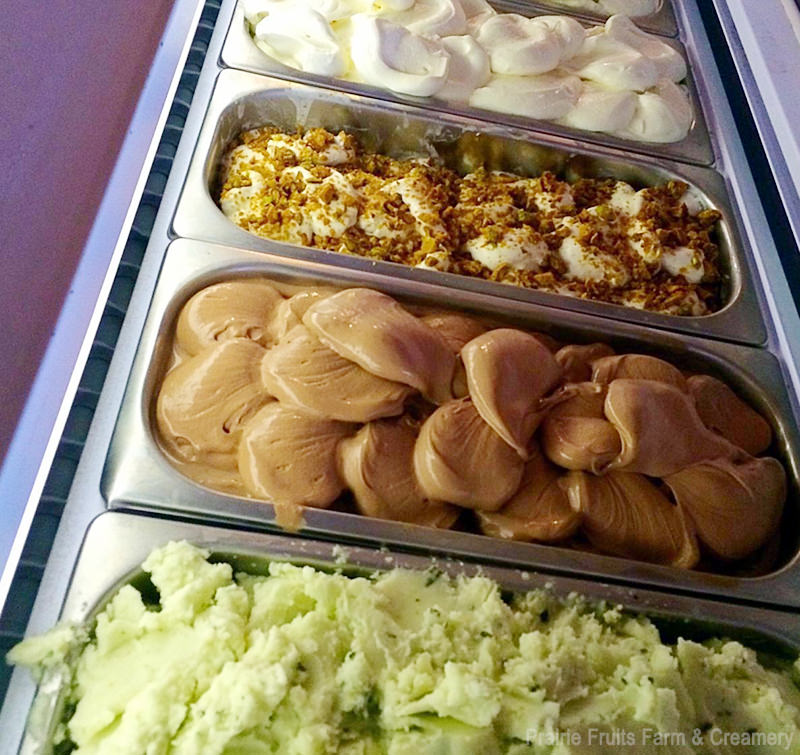
At one time, the concept of receiving a box full of vegetables at a farmers market was, well, fresh and new. Now, community-supported-agriculture programs are becoming more inventive with their offerings, from gelato CSAs to CSA dinner clubs. Subscribing to one means you support a local, small-scale farmer or food producer and are helping to keep their business afloat, while at the same time getting a regular supply of the food and products you already use and love. Here are five truly innovative twists on the model from across the country.
1. Wine CSA

Lost Acres Vineyard
North Granby, Conn.
Owners: Michelle Niedermeyer and Kevin Riggott
Looking for the right wine to complement your CSA-inspired dinner? Wine CSAs are quietly spreading across the country. Instead of a farm producing vegetables or milk, it’s a vineyard. Lost Acres Vineyard offers customers three pick-ups of eight bottles per year. Members can choose from the winemaker’s selection or customize their share by selecting their own varieties. The wine CSA also offers opportunities for CSA subscribers to tour, taste, and go behind the scenes to learn the art and science of winemaking.
2. Gelato CSA

Prairie Fruits Farm & Creamery
Champaign, Ill.
Owners: Leslie Cooperband and Wes Jarrell
Many CSA subscribers are finding CSAs that not only support local agriculture but have the added convenience of being a finished product—think gourmet cheeses, breads and, yes, even gelato. On their 22-acre farm, Prairie Fruits Farm and Creamery owners Leslie Cooperband and Wes Jarrell raise three goat breeds and tend an organic vegetable, herb, fruit-tree and berry farm—the perfect combination for producing creamy, delicious gelatos.
Because their goats produced enough milk to support another product, they purchased a gelato machine and headed to Italy to study the art and science of gelato making. Soon, their CSA cheese subscribers began requesting requesting a gelato CSA.
Every two weeks for a total of 13 pick-ups, CSA members cool their palate with pints of creamy gelato in herb-infused flavors like lemon verbena or chocolate mint (using no chocolate or green food coloring). Additional CSA offerings include sorbetto, fresh and aged cheeses, and bread from a local baker: Stewart’s Artisan Breads of Mahomet, Ill. The gelato CSA has merged the best of two worlds—the satisfaction of eating local with the infused flavor of Italy in their corner of of the Midwest.
3. Lease a Peach Tree

Schnepf Farms
Queen Creek, Ariz.
Owners: Mark and Carrie Schnepf
One of the benefits of a CSA is the just-picked freshness of the food. But what if that idea of freshness was taken one step further? Many farms are now offering a different kind of CSA: one where connection to the land is part of the experience. Urbanites looking for a rural retreat or chefs looking to make farm-to-fork connections find these experiences rewarding, so leasing small plots on a farm or even a tree is a new trend for community-supported agriculture.
At Arizona’s Schnepf Farms, the state’s largest organic peach farm, people can lease their very own peach tree. The tree lessee gets their name on the tree and receives a map of its exact location. They also receive notifications of when their tree is being pruned (so they can participate or simply enjoy watching), when the tree is flowering and expected peak ripe times for picking—usually about a 10-day period. One tree can produce anywhere from 100 to 150 pounds of peaches in a season. The innovative peach-tree leasing program not only helps to support the farm, it literally offers a taste of farm life and ownership.
4. CSA Dinner Club

One of the perks of belonging to a CSA is often involvement in the farm through tours and on-site farm-to-fork dinners. These rewards make CSA participation a social and fun endeavor. The dinner club trend is winning favor among subscribers who are looking for a more community-oriented CSA.
At a CSA dinner club, like-minded foodies gather for meals created from their CSA bounty. Judith Much of Ferndale, Pa., for example, loved the idea of joining a CSA, but knew she and her husband wouldn’t be able to eat all the produce themselves. Gathering her like-minded friends, they split the shares. Over roasted fennel and Parmesan, they share conversation and have friendly foodie competitions to see who can create the most unique dishes with their shares.
5. Partnership CSAs

Soap, eggs and flowers—oh, my! Once a more solitary pursuit, a CSA subscription supported one farm and one farm only. However, we’re beginning to see more and more farmers partner with other farmers to offer a more diverse share. Partner CSAs save you from running to one stop for veggies and another for, say, butter. Because of this added convenience and variety to the consumer, farmers get more CSA participation.
One example of a partnership CSA is in Maryland. Tom Reinhardt, owner of Nev-R-Dun Farm joined with neighboring farmers Jen and Kirk Robertson of R&R Farm. The two organic farms are 0.7 miles from each other, and together, they’re able to offer a Certified Organic vegetable/herb CSA, a pork share and an egg share. For 2015, they added organic apples from Oyler’s Organic Farms in Biglerville, Pa., and Trickling Springs Creamery dairy products, such as milk, butter and cheese. CSA subscribers can add as many of these options onto their subscriptions as they choose.
To find a CSA—traditional or otherwise—near you, check out the CSA database on Local Harvest.




